By Richard Just, MD
 In today’s China, both eastern and western medical philosophies and practices exist relatively harmoniously. Patients with minor, usually self limited problems are treated initially with a seven day course of seven liquid herbal preparations taken each day. If symptoms subside, usually treatment is discontinued. If improved but not resolved, formula may be modified. If worse, regimen can be changed and/or referral to specialists arranged. There are hospitals that practice purely eastern or only western medicine. But it is becoming more frequent to find hospitals that integrate both disciplines. Chronic conditions, like cancer, tend to be treated with western techniques, with Traditional Chinese Medicine (TCM) used in a supportive or complementary role.
In today’s China, both eastern and western medical philosophies and practices exist relatively harmoniously. Patients with minor, usually self limited problems are treated initially with a seven day course of seven liquid herbal preparations taken each day. If symptoms subside, usually treatment is discontinued. If improved but not resolved, formula may be modified. If worse, regimen can be changed and/or referral to specialists arranged. There are hospitals that practice purely eastern or only western medicine. But it is becoming more frequent to find hospitals that integrate both disciplines. Chronic conditions, like cancer, tend to be treated with western techniques, with Traditional Chinese Medicine (TCM) used in a supportive or complementary role.
 I was somewhat surprised to hear that the 2 largest cancer problems are breast cancer and liver cancer (mainly the former but not the latter). Before I left, one of my patients had brought an article to my attention about a low incidence of breast cancer in China compared to the West. This may not be the case. Primary liver cancer, hepatocellular carcinoma), has long been the number one cancer in frequency in the world due to a high incidence of hepatitis, especially in Asia. This results in chronic active hepatitis, cirrhosis and, finally, cancer. Even though we stayed at 5 star hotels, we didn’t brush our teeth or rinse our toothbrushes with tap water, and avoided ice. Sanitation, or lack of it, is an issue.
I was somewhat surprised to hear that the 2 largest cancer problems are breast cancer and liver cancer (mainly the former but not the latter). Before I left, one of my patients had brought an article to my attention about a low incidence of breast cancer in China compared to the West. This may not be the case. Primary liver cancer, hepatocellular carcinoma), has long been the number one cancer in frequency in the world due to a high incidence of hepatitis, especially in Asia. This results in chronic active hepatitis, cirrhosis and, finally, cancer. Even though we stayed at 5 star hotels, we didn’t brush our teeth or rinse our toothbrushes with tap water, and avoided ice. Sanitation, or lack of it, is an issue.
Everywhere in China, especially big cities, there are forests of skyscrapers. Private homes are essentially nonexistent as the government owns all the land. New construction is ubiquitous, so cranes are numerous. Many of these apartment spaces are empty due to high prices, and those that are bought or rented are shared by several families. Same with kitchens and bathrooms. Public bathrooms may lack toilets and simply be holes in the ground. In some buildings, one bathroom per floor exists. We saw the interiors of 3 residences. First, the home of one of four of the farmers that first discovered the terra-cotta warriors outside Xi’an. Clean. Very little furniture as you buy empty spaces which you have to furnish yourselves. But several generations of the family lives there. Second, a more modest quarters of a woman in the old section of Beijing. Bathrooms were down the road apiece. The last was a tiny, single room in what used to be the French Concession section of Shanghai. Five people slept on one cot. No mystery why hepatitis and liver cancers are still issues.
Another surprise is lack of mention of lung cancer. Cars everywhere. Their gridlock is continuous and called “rush days”. Mist or fog (mostly pollution) gives a surreal appearance to the landscape of high rises. Seemingly everyone coughs. Lots of spitting. A perfect setup for respiratory problems including lung cancer. There are several hospitals in major cities devoted to respiratory diseases, however.
An excellent article appeared in the Wall Street Journal, Tuesday, April 3, 2012, pg D4, entitled “Chinese Medicine Goes Under the Microscope” by Shirley S. Wang. The main topic is a clinical trial studying a four herb combination, called huang qin tang in China and PHY906 in this trial, in combination with chemotherapy to see if effective in reducing side effects of chemo (nausea, vomiting, and diarrhea). If so, patients might be able to tolerate higher doses of chemo with better results. Trial design and quality control are issues when doing studies such as these:
One challenge with using herbal medicines is that the ratio of the chemicals they contain isn’t consistent when plants are grown under different conditions. After testing various suppliers, Dr. (Yung-Chi) Cheng ended up creating a biotechnology company sponsored by Yale called PhytoCeutica to carefully monitor growing conditions to ensure plants from different batches were pharmacologically consistent and to continue clinical development of the compound.
Finally, an article that appeared in the China Daily entitled “There’s More to Life Than Money” by Cai Hong, a senior writer for the paper, cites the first World Happiness Report released by the Earth Institute last month. Not surprisingly, the top 4 rated are northern European welfare states: Denmark, Finland, Norway and the Netherlands. China doesn’t make the top 100. One of the benchmarks evaluated is health:
……Increased insurance coverage has not yet been effective in reducing patients’ financial risks, as both health expenditure and out-of-pocket payments continue to rise rapidly. And there are many reports of disgruntled patients and their relatives attacking the medical staff in hospitals. Reform of public hospitals is essential to control health expenditure because such institutes deliver more than 90% of the country’s health services. But Health Minister Chen Zhu said the cost of improving care remains an obstacle, and China is looking to other nations for cost-effective solutions.
While this notice appeared in the WSJ this last weekend:
U.S.-China Pharma: Some big pharmaceutical firms are partnering with Chinese companies in trying to discover the next blockbuster drug. This Philadelphia conference will include venture capitalists and such Western firms as Novartis and Abbott Labs. Wednesday-Thursday, Hub Cira Centre. Regular admission: $1,799.00.
I find it interesting that both the U.S. and Chinese governments are investigating hospitals for price gouging in the sale of drugs. Further, given the emerging cost and access pressures they’re witnessing, might mainland China by eying the health system reform experiment underway in Taiwan?
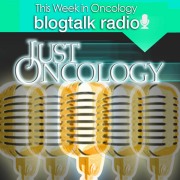

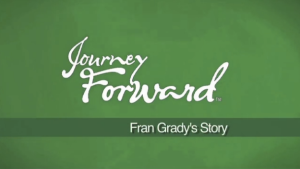
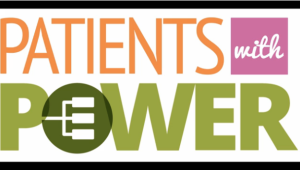
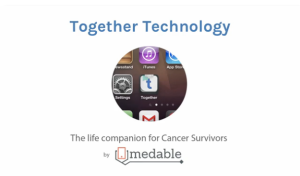 Both remaining Crowds Care for Cancer: Supporting Survivors Challenge finalists are scheduled as follows:
Both remaining Crowds Care for Cancer: Supporting Survivors Challenge finalists are scheduled as follows: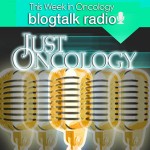

 The ‘Cancer Survivorship’ Tweetchat began with the following Tweets:
The ‘Cancer Survivorship’ Tweetchat began with the following Tweets:









